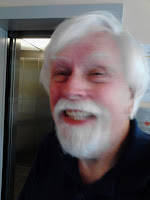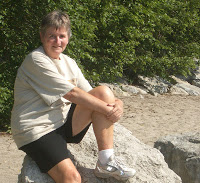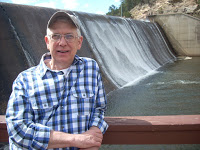During my working life at IBM we often quoted a favorite catch-phrase, the tyranny of numbers. As you can well imagine, we were for the most part, like most if not all businesses, largely ruled by numbers. But this particular term originated in the computer world of the 1950’s, not so long before I began working for IBM in 1966, when computers were still the size of a house and you literally opened a door and went inside one to fix whatever ailed it. Computer engineers were unable to increase the performance of their designs at this time due to the huge number of components involved. In theory, every component needed to be wired to every other component, which were typically strung together via wire-wrapping and soldering by hand, a large part of my job for the first two years of my career. In order to improve performance, more components would be needed, and it seemed that future designs would consist entirely of countless components connected by endless wiring installed and endlessly repaired manually by countless people.
We were freed from this particular tyranny by the silicon chip, reducing that multi-faceted piece of house-sized equipment to something that can fit inside your watch. But the phrase has, unsurprisingly, never lost it’s appeal. I say ‘unsurprisingly’ because we are ever increasingly, it seems, ruled in every aspect of our lives by facts and figures; perhaps more accurately the facts of figures, in everything from the entire planet and indeed the universe down to every individual. The numbers applied to both the universe and even just our planet are so huge most of us cannot even grasp them. Our sun is one of an estimated two to four hundred billion stars in our Milky Way Galaxy alone. Does that really mean anything to you? It loses me! Just the age of this planet, roughly 4.5 billion years, is beyond most of us. In an effort to help us understand such huge figures some clever people have tried to put them into a different perspective. The age of the earth, for instance, and it’s major events, have been portrayed as a 24-hour clock.* On this scale, humans don’t appear until almost 11.59 pm, dinosaurs at 10.56, and I must tell you that we didn’t manage to invent sexual reproduction until after six in the evening. (Incidentally, my own problem with this depiction is – when exactly does midnight arrive and what happens then??)
As to the personal, I used to know what I weighed, and was sadly aware that that figure (in more than one sense of the word!) indicated that I was overweight, except back in those politically incorrect days I was just ‘fat’. But simple weight is no longer good enough! Now I know what my BMI number is, which in turn tells me that if I don’t lose some exact number of pounds, I shall not be old-style fat, nor new-style overweight, but new-age obese! Talk about tyranny!
We seem to have fallen into some kind of paint by numbers version of reality, don’t we? We fail to vote because, according to the poll numbers, we already know who will win, so why bother?
If we do vote, for many of us it is meaningless because we live in a district gerrymandered – based on yet other numbers – to ensure one party will always win. Our President is voted in by one set of numbers and out by another, depending on which way our country choses to count.
This tyranny of numbers is nothing new. Benjamin Disraeli, British Prime minister in the mid-eighteen hundreds, famously said there are three levels of lies: lies, damned lies, and statistics.
In 2010, a man named David Boyle wrote a book entitled The Tyranny of Numbers. ** He examines our obsession with numbers. He reminds us of the danger of taking numbers so seriously at the expense of what is non-measurable, non-calculable: intuition, creativity, imagination, and happiness.
‘We count people, but not individuals. We count exam results rather than intelligence, benefit claimants instead of poverty …… Politicians pack their speeches with skewed statistics: crime rates are either rising or falling depending on who is doing the counting. We are in a world in which everything is designed only to be measured. If it can’t be measured it can be ignored. The problem is what numbers don’t tell you – they won’t interpret, they won’t inspire, and they won’t tell you precisely what causes what.’
It feels so strange. As they so often do, things have come full circle. By inventing our way out of the original tyranny of numbers, we created the very devices which now create the new tyranny.
Yet there is good news. Am I not right in thinking that the LGBT community is less a victim of all the numbers games than most? Perhaps it is an unexpected benefit of having been invisible for so long. We have never been, and right now it looks as if we never will be, identified in the U.S. census.We didn’t exist so we couldn’t – and to some degree still cannot – be counted. No-one can come up with accurate statistics about us. They don’t know what beer we drink or restaurants we favor. They don’t know what ads to send to our TV’s and computers. They don’t even know where we live. Statistical generalities about our community are almost impossible. And on the other side of the coin, I think we tend to care much less about their stats anyway; possibly because they so infrequently include us or apply to us as a group, but I prefer to believe it is simply because we are more independent, more free-thinking, than many.
And I am safe in sticking with that because there are, and perhaps never will be, any statistics to prove me wrong!
* https://flowingdata.com/2012/10/09/history-of-earth-in-24-hour-clock/https://
** www.goodreads.com/book/show/2556446.The_Tyranny_of_Numbers
© June 2017
About the Author
I was born and raised in England. After graduation from college there, I moved to the U.S. and, having discovered Colorado, never left. I have lived in the Denver-Boulder area since 1965, working for 30 years at IBM. I married, raised four stepchildren, then got divorced after finally, in my forties, accepting myself as a lesbian. I have been with my wonderful partner Betsy for thirty years. We have been married since 2013.




